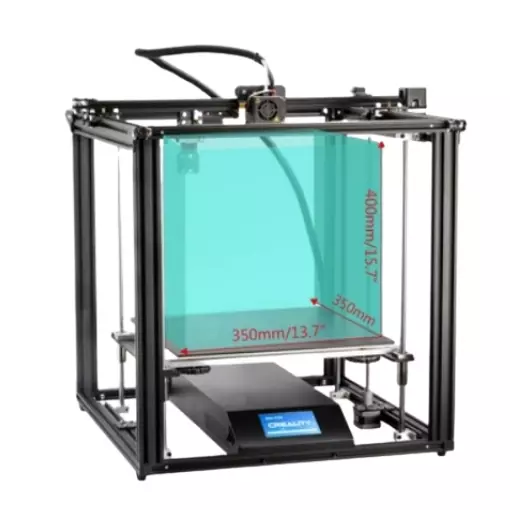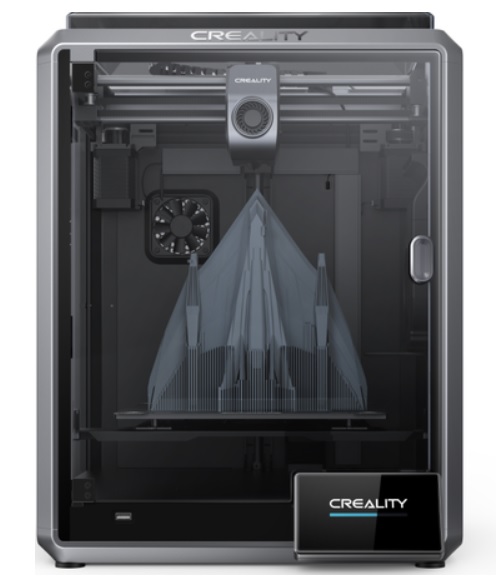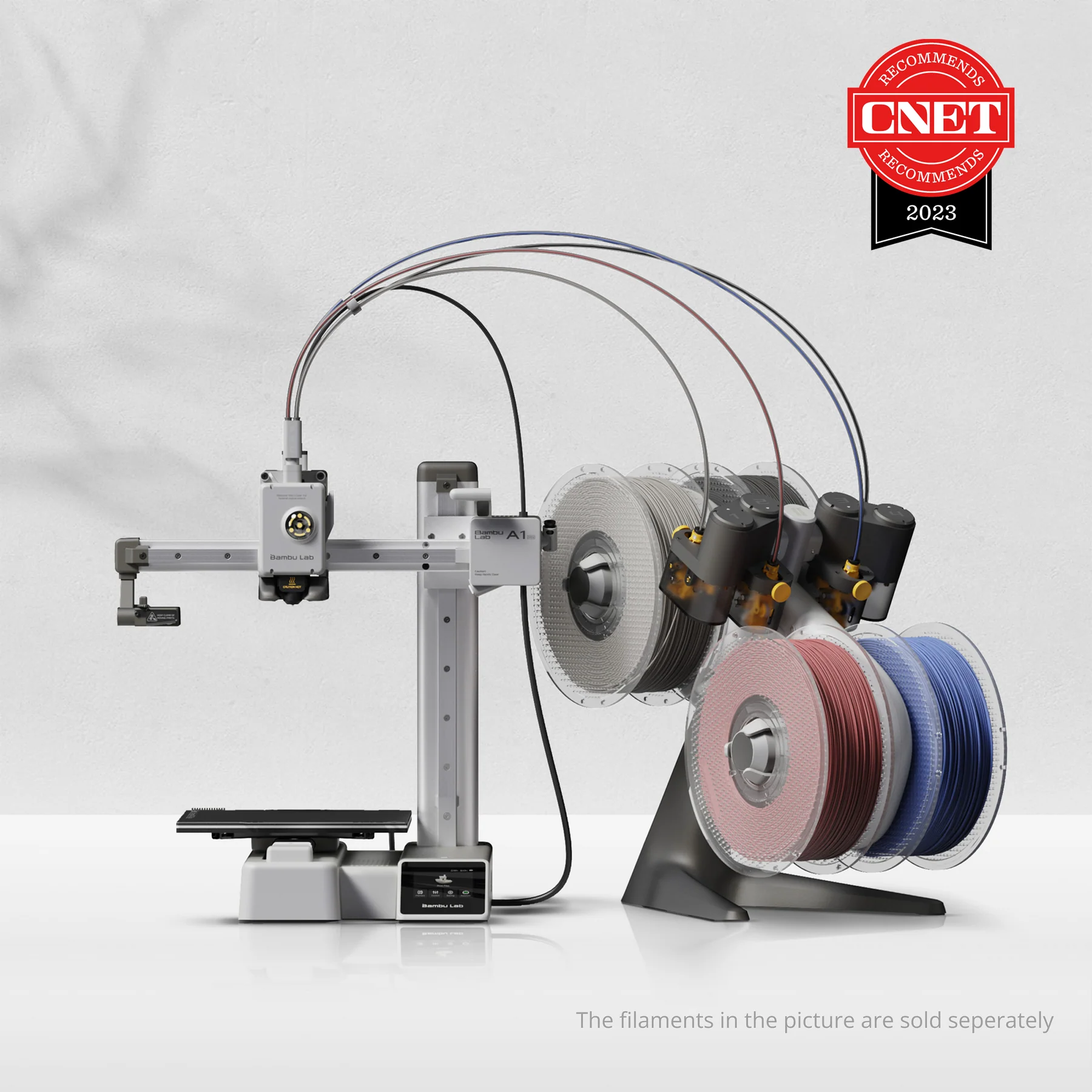Compare Ender 5 Plus vs K1 vs A1 Mini
Comparison between the best 3D printers
Choose the best 3D printer at the best price. The cheapest 3D printers are here.
Buy a 3D printer here with 3D Fila.
 |
 |
 |
|
| Model | Ender 5 Plus[BUY Ender 5 Plus] |
K1[BUY K1] |
A1 Mini |
| Printing Material | Filament | Filament | Filament |
| Estimated price | $599,00 | $399,00 | $549,00 |
| Fabricante | Creality 3D | Creality 3D | Bambu Lab |
| Release Year | 2019 | 2023 | 2023 |
| Print Volume [mm] | 350x350x400 | 220x220x250 | 180x180x180 |
| Printer Size [mm] | 632x619x666 | 355x355x480 | 315x347x365 |
| Weight [kg] | 18,2 | 12,5 | 5,5 |
| Power Loss Recovery | YES | YES | YES |
| Enclosed printer | NO | YES | NO |
| Bed Leveling | Automatic | Automatic | Automatic |
| Filament End Sensor | YES | YES | YES |
| Bed type | Heated | Heated | Heated |
| Power supply system | Bowden | Direct Drive | Direct Drive |
| Standard nozzle | 0,4 | 0,4 | 0,4 |
| Maximum Nozzle Temperature [°C] | 260 | 300 | 300 |
| Maximum Bed Temperature [°C] | 100 | 120 | 80 |
| Maximum printing speed [mm/s] | 180 | 600 | 500 |
| Filament holder | YES | YES | YES |
| Camera for supervision | NO | NO | YES |
| Recommended filaments | PLA, TPU, ABS, PETG | ABS, PLA, PETG, PET, TPU, PA, ABS, ASA, PC, PLA-CF, PA-CF, PET-CF | PLA, PETG, TPU, PVA |
| Recommended slicers | Cura, Simplify, Slic3r | Creality Print; Cura, Simplify3D e PrusaSlicer | Bambu Studio, Super Slicer, Cura, Prusa Slicer, Orca |
| Maximum Resolution [mm] | 0,1 | 0,1 | 0,1 |
| Processor | 32 bits | 32-bit Silenciosa | |
| Display | Touchscreen TFT 4,3'' | Display touchscreen 4,3'' | Touchscreen 2,4'' |
| Power Supply | 24V / 504W | 110/220V / 350W | 150 W |
| Connectivity | SD / USB | Ethernet / USB / Wi-Fi | Wifi, Bambu bus, Cartão SD |
| Operating systems | Windows, Mac, Linux | Windows, Mac, Linux | Windows, Linux, Macbook |
| Date of registration in the system | 2021-04-14 | 2023-04-17 | 2024-04-10 |
| Release date | 2019 | 2023 | 2023 |
| Extra features | The Ender 5 Plus offers a large print volume (350x350x400 mm) and fast assembly. It includes a BLTouch sensor, but with range limitations. It stands out for its dimensional accuracy, although it requires adjustments to the slicer settings. Despite the noise, its integrated design saves space, and includes features such as a filament sensor and power resumption. Ideal for large projects, it requires refinement in the settings for high-quality prints. | The K1 is an extremely fast FDM 3D printer, reaching 600mm/s, 12 times faster than standard models. Equipped with a Core XY system and lightweight print head, it offers energy efficiency and high print quality. It stands out for its dual-gear extruder and quickly heated hotend, as well as dual cooling to prevent warping. Its robust structure ensures stability at high speed, with optimized software to speed up the printing process. | The Bambu Lab A1 Mini stands out not only for its impressive speed and automatic calibration, but also for its multi-color printing capability thanks to AMS Lite. This innovative system makes multi-color printing easy, making it accessible to everyone. AMS Lite, specific to the A1 Mini, supports up to four different materials simultaneously, providing creative freedom without complications. With comprehensive sensors for energy monitoring and recovery, a camera for timelapses and Wi-Fi control, the A1 Mini and AMS Lite together offer an intuitive and advanced 3D printing experience, ideal for materials such as PLA, PETG and TPU, and designed for simplicity and fast maintenance with quick-change nozzles. |
| Support for multiple colors and materials (AMS and CFS) | NO | NO | YES |
Notes * |
|||
| Cost-benefit | 6 / 10 | 8 / 10 | 7 / 10 |
| Hardware | 2 / 10 | 4.8 / 10 | 4.8 / 10 |
| Screen | . | . | . |
| Print volume | 4 / 10 | 3 / 10 | 3 / 10 |
| Performance | 1 / 10 | 5 / 10 | 4 / 10 |
| [BUY Ender 5 Plus] | [BUY K1] |
Conclusion |
| In comparing the three 3D printers - the Ender 5 Plus, K1, and A1 Mini - several key aspects stand out, helping potential buyers make an informed decision based on their needs and budget. 1. **Price and Value**: The K1 offers the best cost-benefit ratio, providing high-speed printing and robust features at an affordable price point. The Ender 5 Plus, while slightly more expensive, excels in print volume and precision but requires adjustments for optimal results. The A1 Mini, although priced in the middle range, stands out for its multi-color printing capabilities and user-friendly operation. 2. **Print Volume and Size**: If print volume is critical, the Ender 5 Plus is unparalleled with its large dimensions, making it suitable for larger projects. The K1 and A1 Mini, while more compact, cater better to smaller-scale printing needs. 3. **Print Speed and Quality**: The K1 leads with an impressive maximum print speed of 600 mm/s, which is significantly faster than both competitors. The A1 Mini also delivers high-speed performance but lacks the K1's absolute speed. Meanwhile, the Ender 5 Plus focuses more on accuracy than speed, which may be desirable for detailed work. 4. **Features and Usability**: All models come equipped with automatic bed leveling and filament sensors, but the K1 and A1 Mini include advanced features like dual cooling and a camera for monitoring prints, enhancing the user experience. The A1 Mini's capability for multi-color printing adds a creative dimension for users looking to explore more complex projects. 5. **Build Quality and Design**: The Ender 5 Plus is the heaviest, reflecting its robust construction, but it does not feature an enclosed design, which may appeal to some users. The K1’s lightweight design enhances portability, and the A1 Mini, though small, is designed for quick maintenance. Overall, if speed and advanced features are priorities, the K1 is the optimal choice. For larger builds, the Ender 5 Plus is suitable but may require more effort to achieve quality results. The A1 Mini works well for users interested in creativity through multi-color printing while maintaining solid performance. In conclusion, the decision ultimately hinges on project scale, desired speed, and specific printing requirements. |

